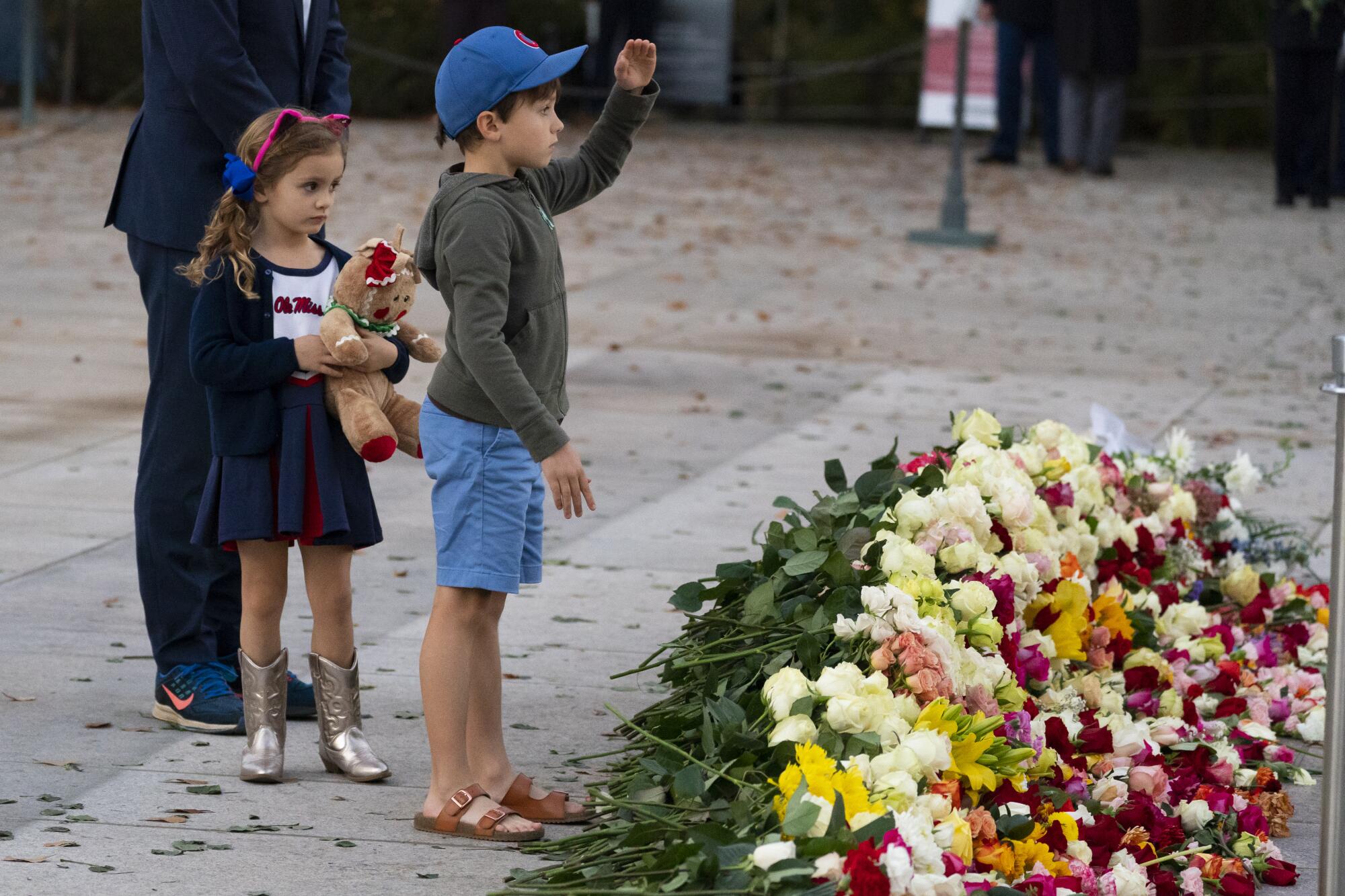
- Share via
Thousands of people joined a solemn procession at Arlington National Cemetery in Virginia, following a path trod for decades by only the Old Guard, to lay flowers and pay respects to the nation’s military dead at the Tomb of the Unknowns in honor of its centennial.
The event was one of several to commemorate the establishment of the Tomb of the Unknowns 100 years ago. A memorial procession, accompanied by a military flyover, will be held today beginning at the main entrance on Memorial Avenue near the welcome center; the public will be able to observe.
Some people attended Tuesday’s ceremony in formal funerary attire, while others came in shorts, sneakers and T-shirts. Some wore masks because of the pandemic, but many did not. They filled the plaza and the steps above the memorial and yet remained so quiet that the breeze could be heard sifting through copper-colored leaves from a nearby tree.
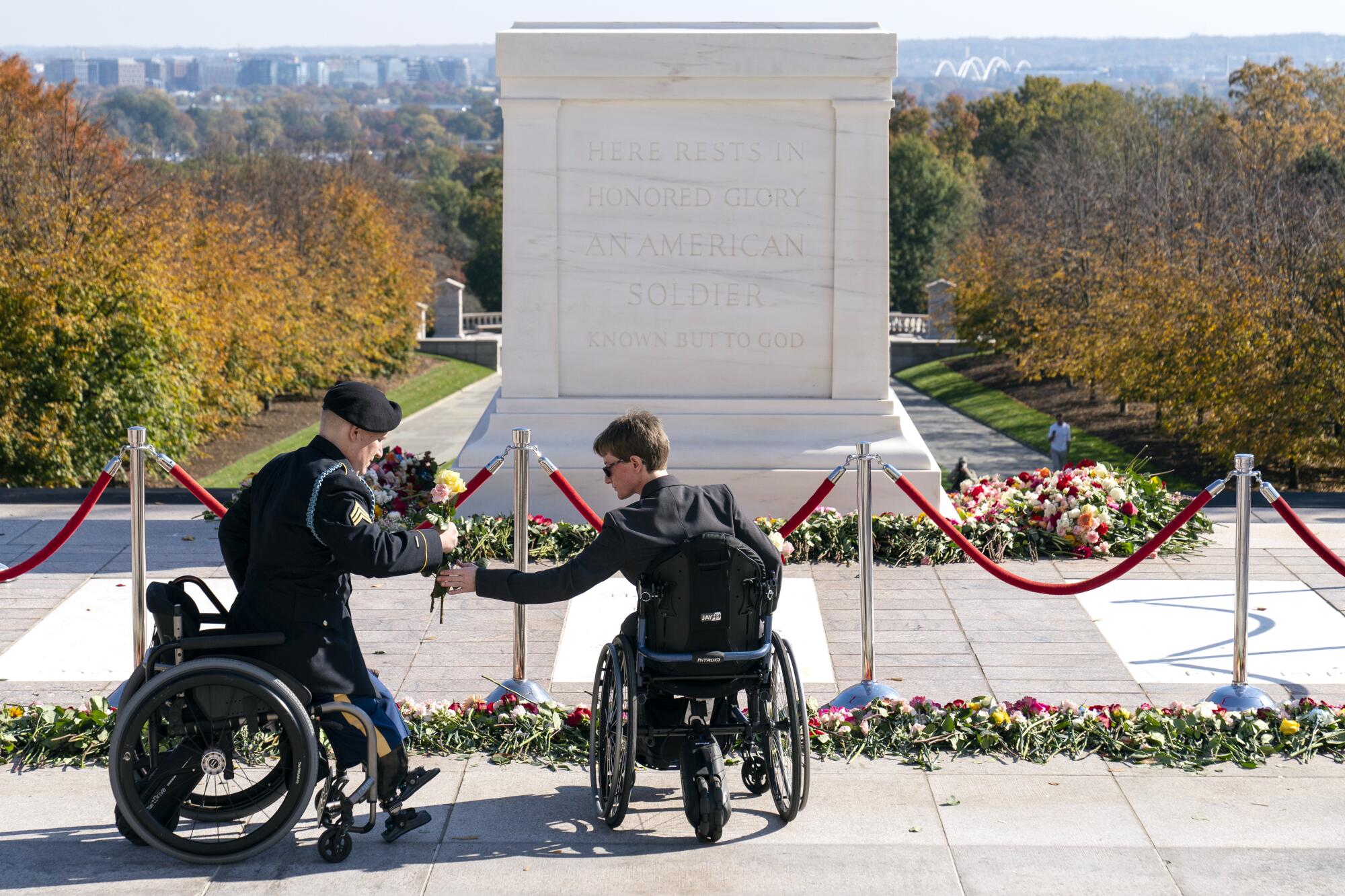
One man knelt at the foot of the tomb and made the sign of the cross before leaving a flower. Four people, dressed in black motorcycle vests, black jeans and riding boots, saluted the tomb, then turned toward the public before marching off. A woman pushed her walker across the plaza, its wheels squeaking faintly on the stones. An Air Force major paused to take a picture but was asked by guards to keep moving. Some sat on the stairs above the plaza, watching the line go past. Others took pictures.
Rixie Lowden of San Clemente, who was in Washington to attend her father’s funeral at the cemetery the day before, came to view the changing of the guard and lay a bouquet of daisies, roses and carnations at the tomb.
“Because I am the daughter of a Marine, I was just thinking about all the fallen people that have come here ... and especially for the Tomb of the Unknown Soldier, and what that would mean for me if that had been my dad that was never found,” said Lowden, whose father, Ret. Sgt. Maj. James Lowden, had served 30 years in the U.S. Marine Corps, including two tours in Vietnam, before his death at age 75. “How sad that would be if we never knew where he was or what happened to him.”
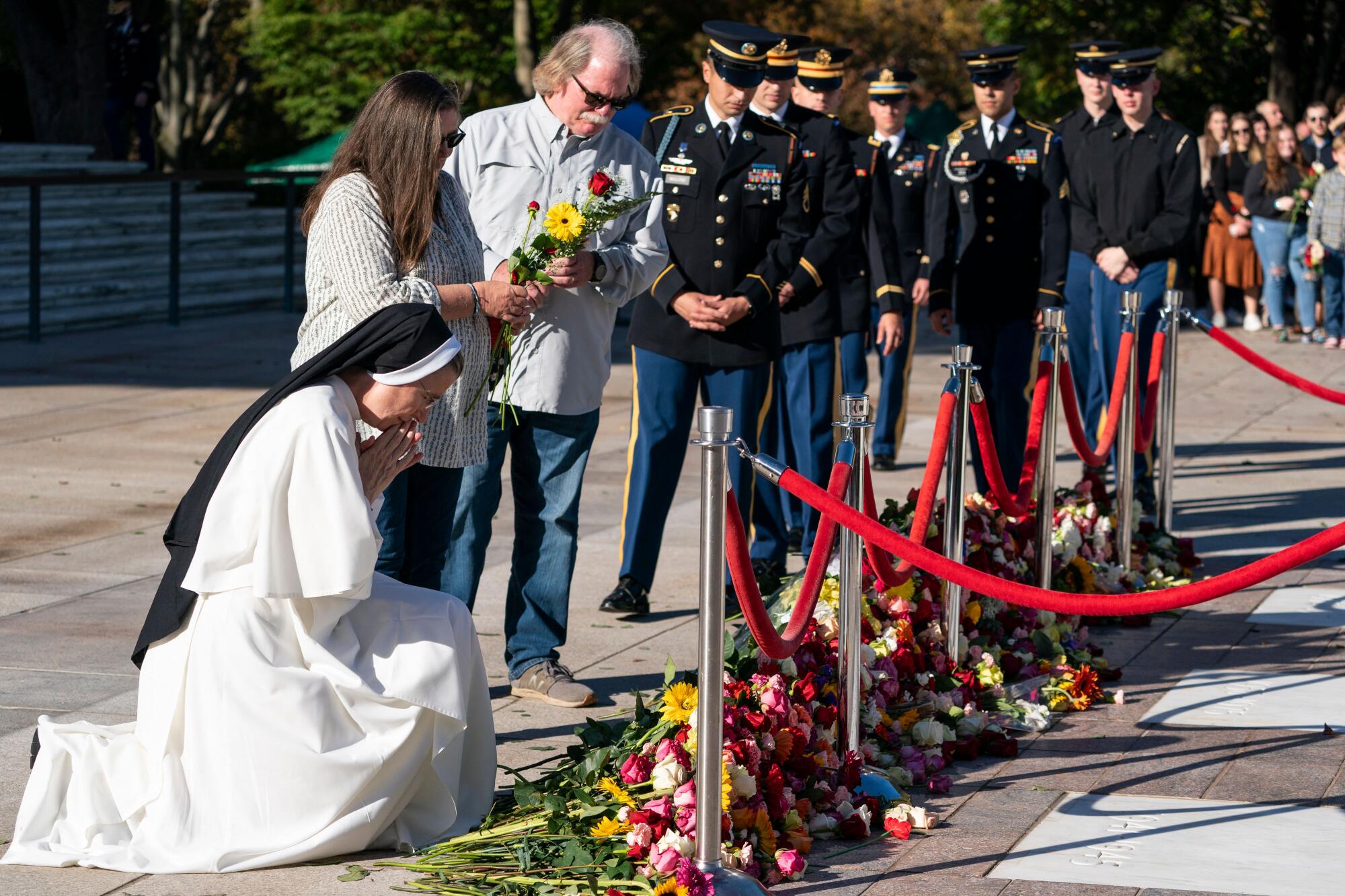
The memorial was established following World War I to commemorate what had been an unprecedented level of carnage in modern warfare. More than 100,000 Americans perished, as did hundreds of thousands of French, British, Germans and others. At the Battle of the Somme in July 1916, more than 19,000 British soldiers were killed in a single day — most within the first 30 minutes, historian John Keegan wrote. The war ended on Nov. 11, 1918.
Three years later, thousands lined the district’s streets to watch as a horse-drawn casket carried the remains of an unknown American soldier through the city, over the Potomac River and into the cemetery.
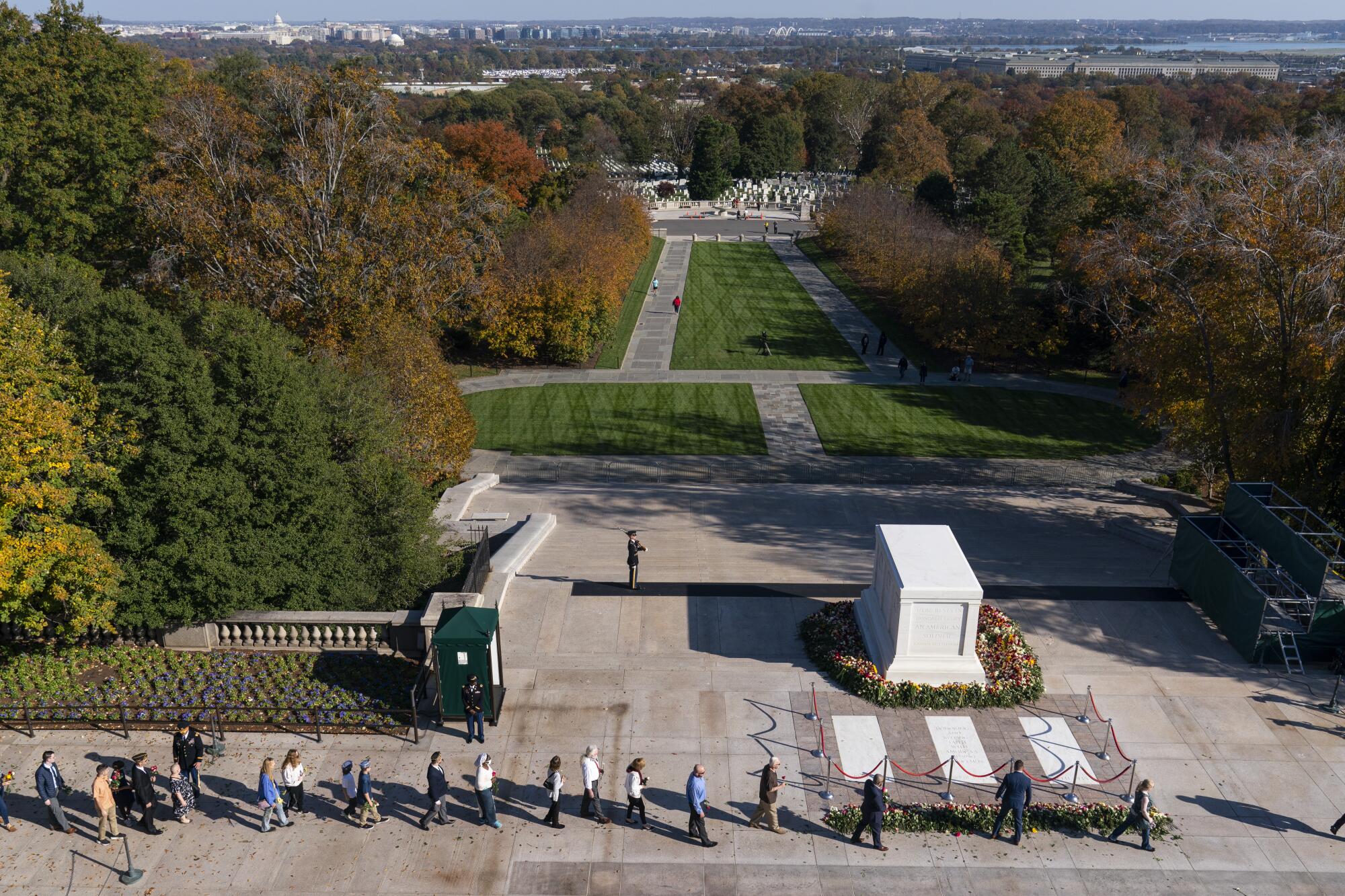
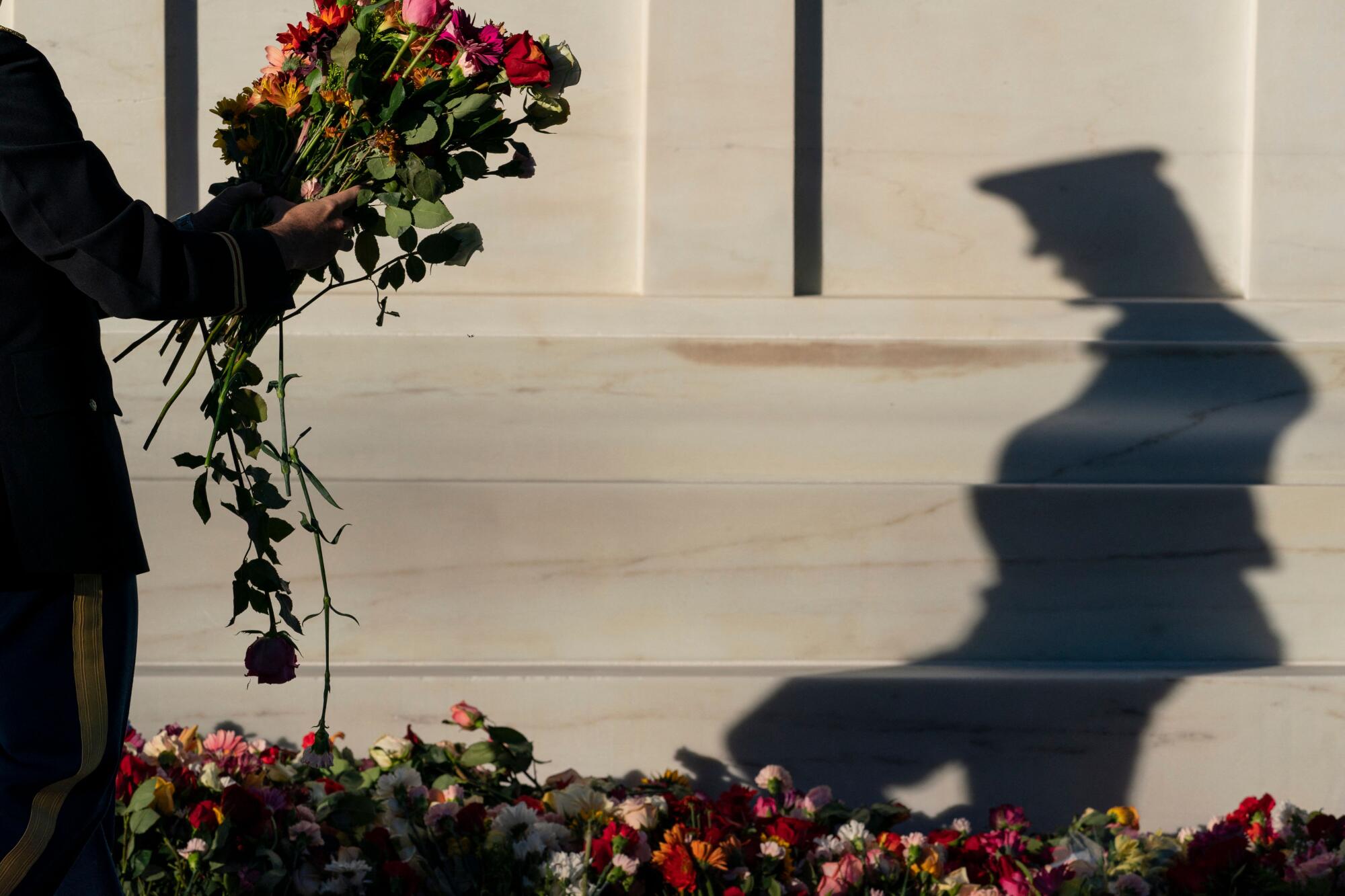
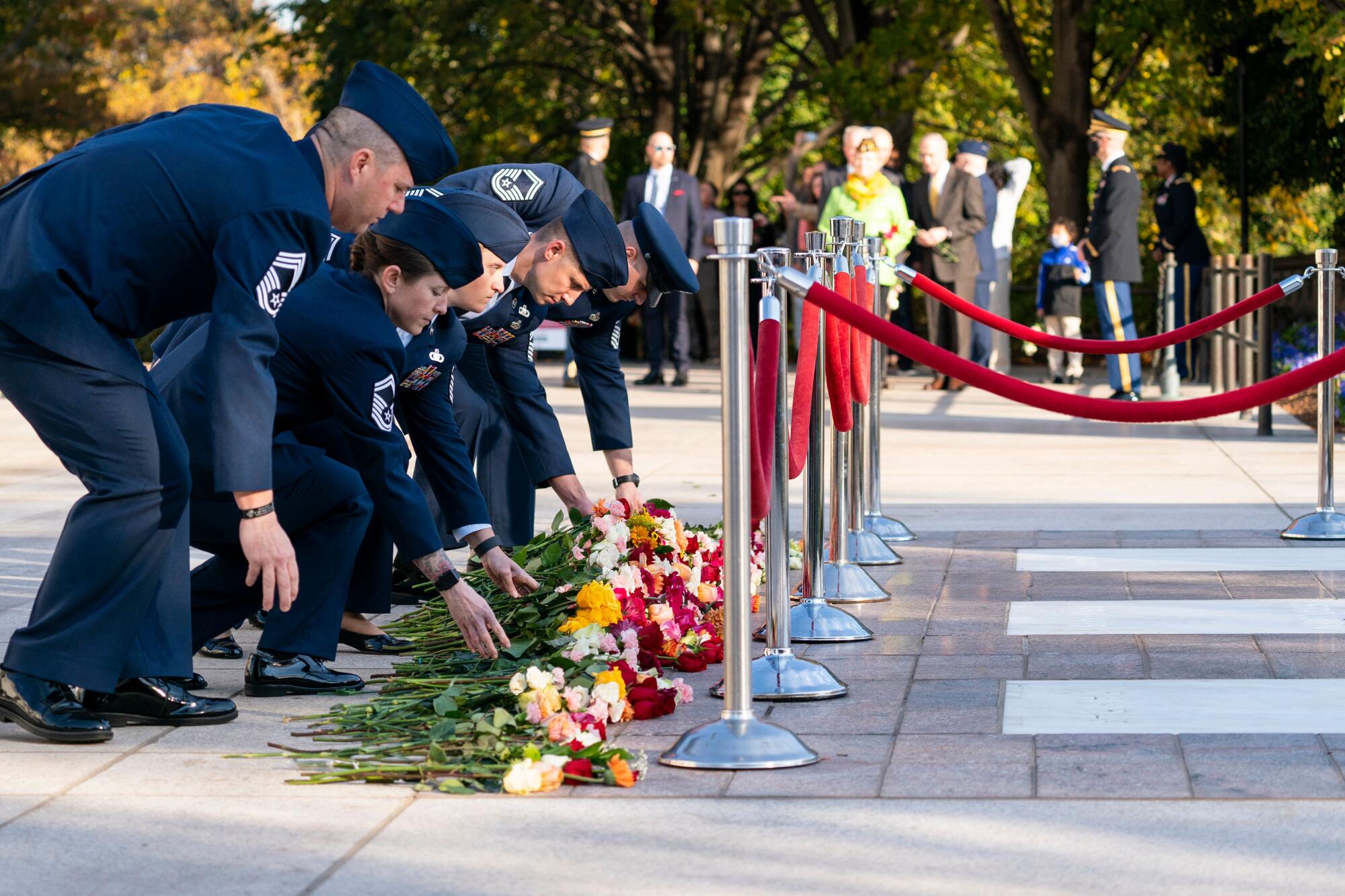
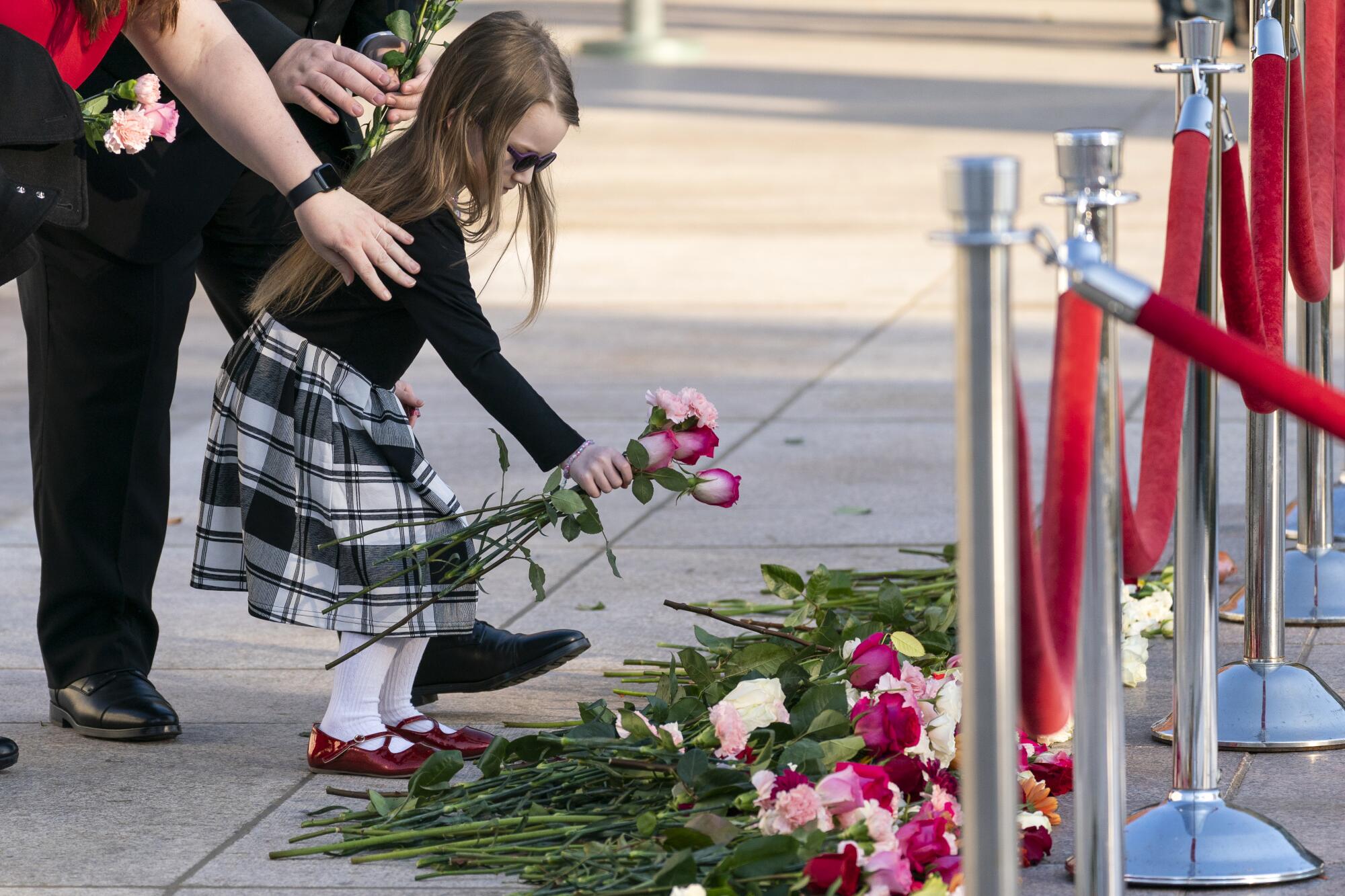
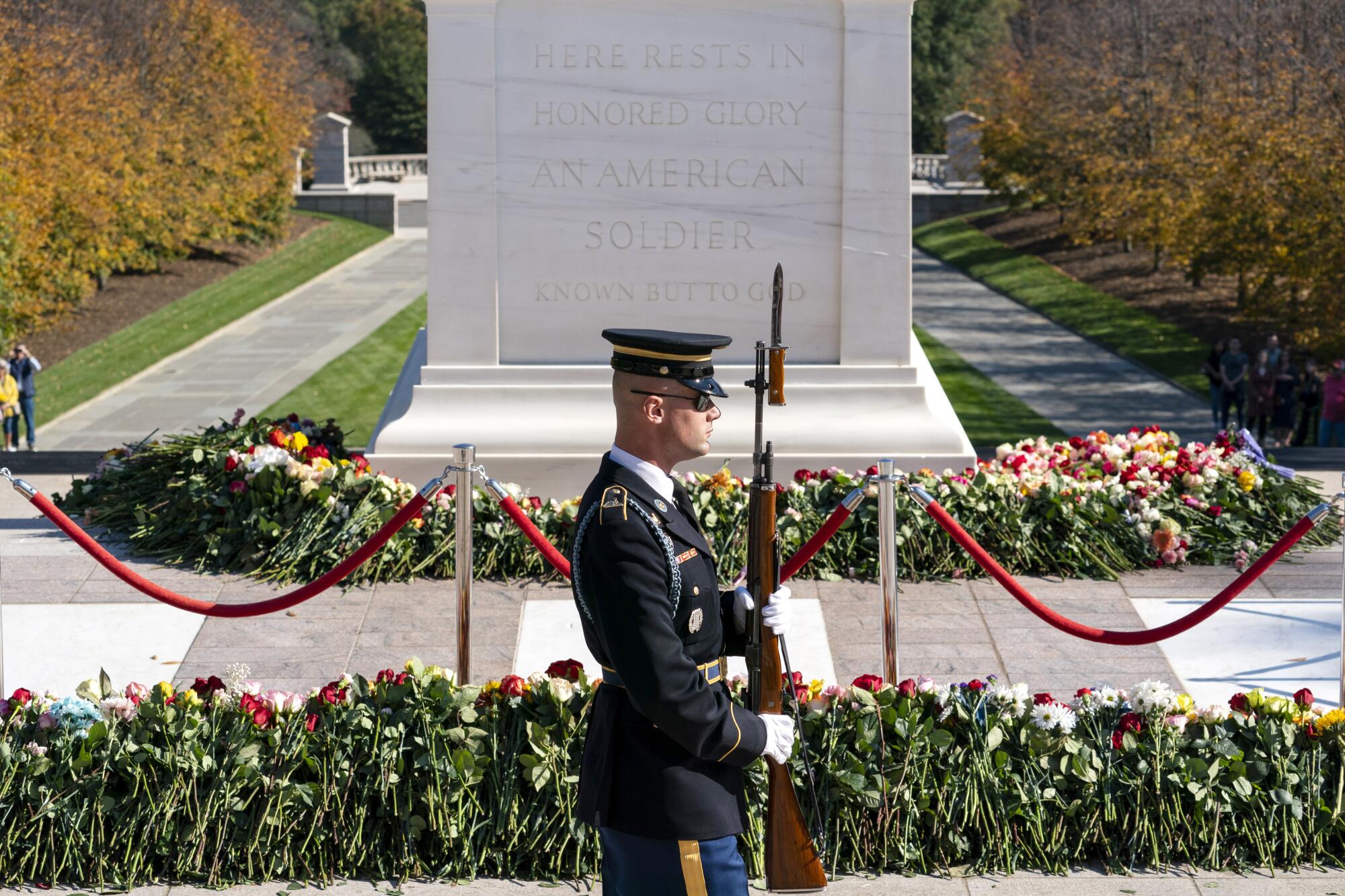
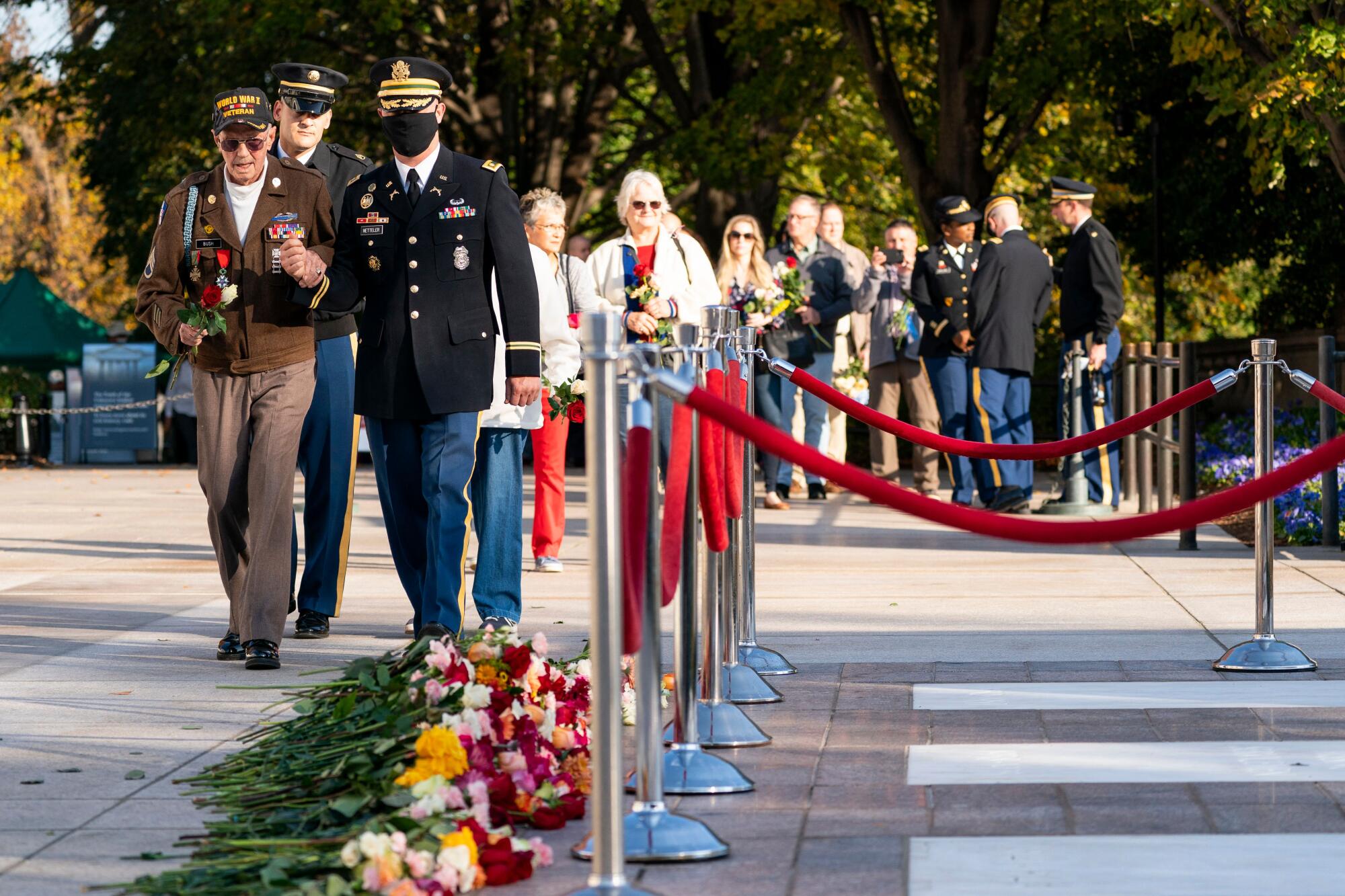
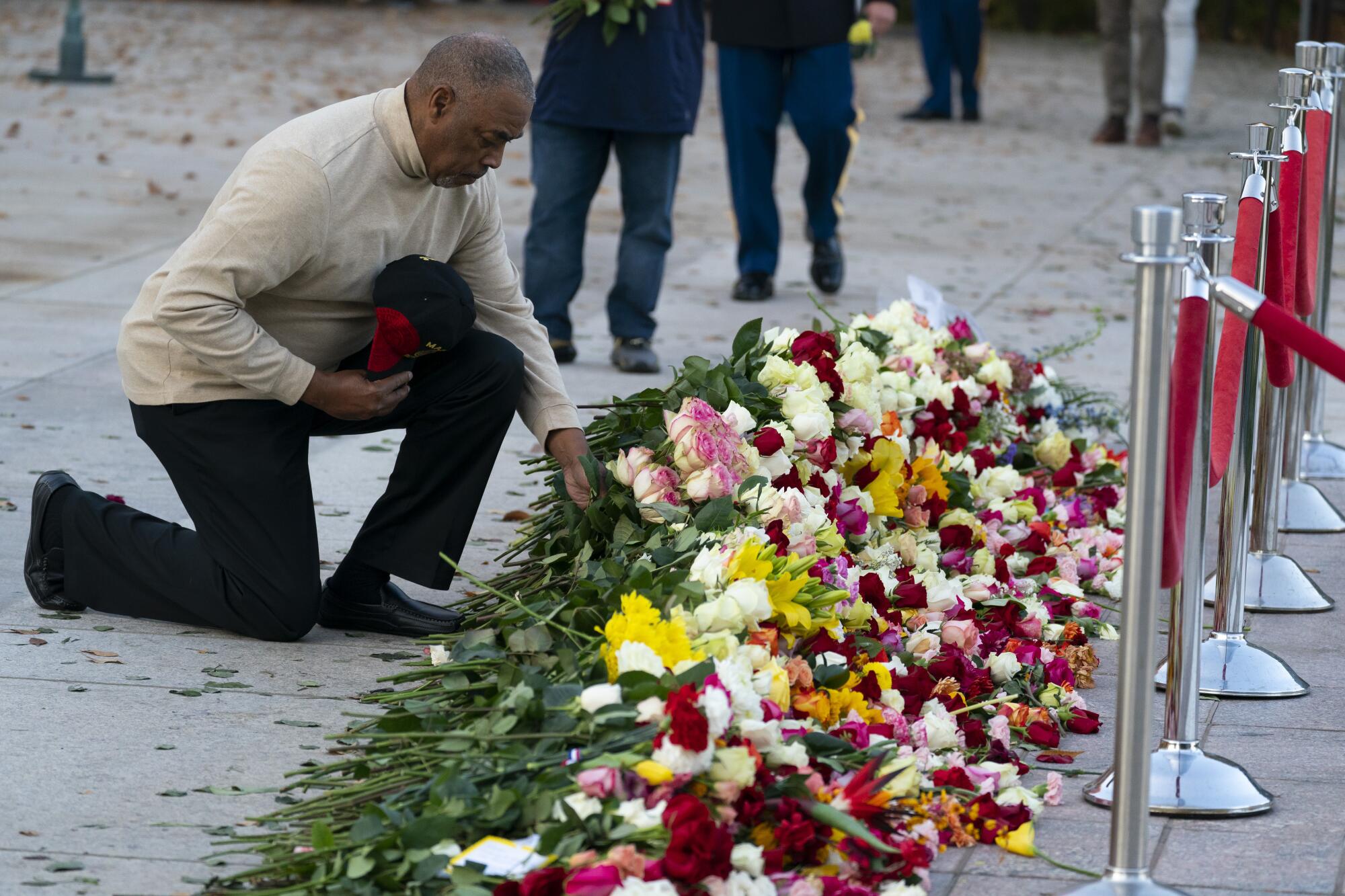

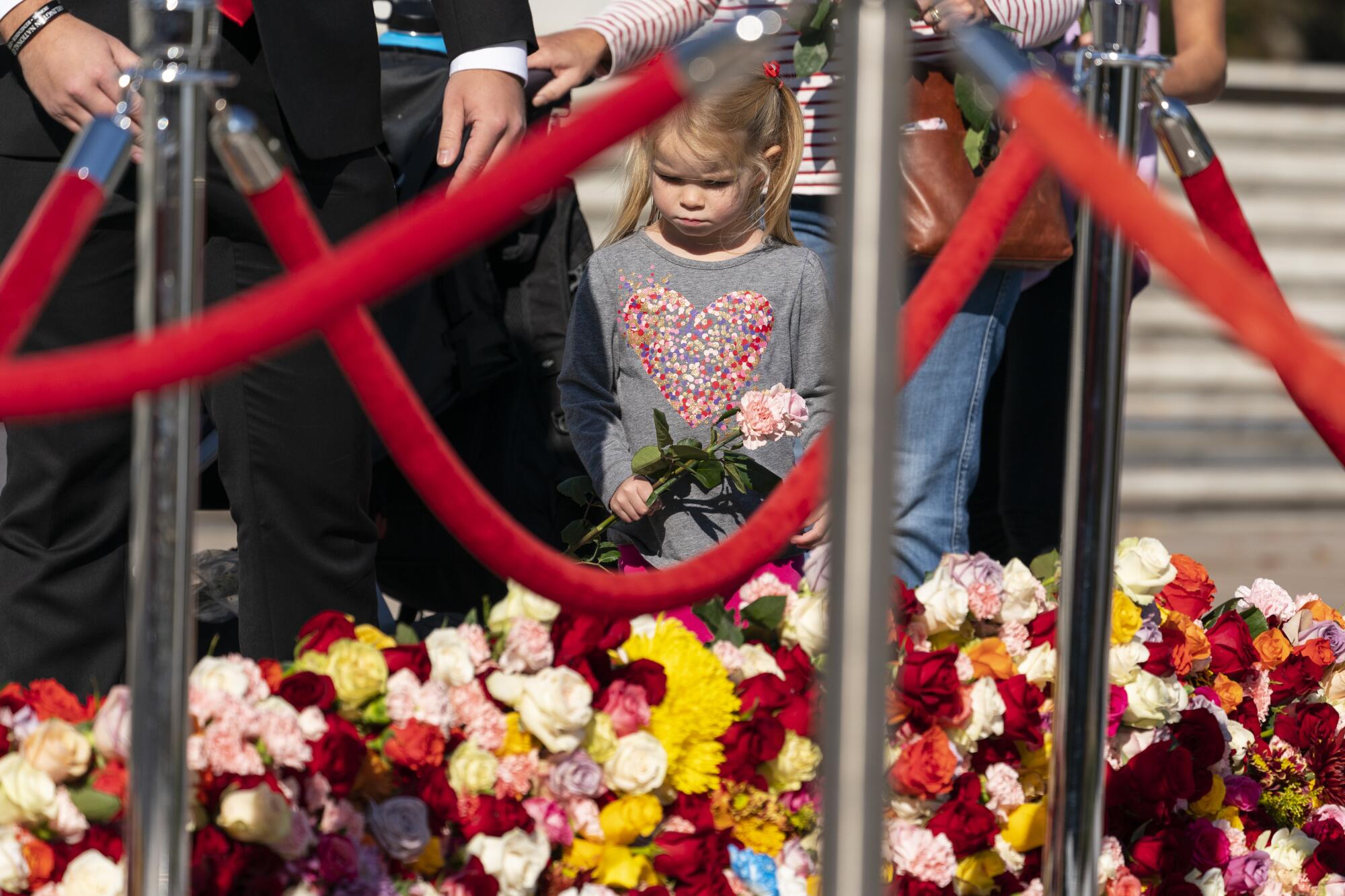
More to Read
Sign up for Essential California
The most important California stories and recommendations in your inbox every morning.
You may occasionally receive promotional content from the Los Angeles Times.













